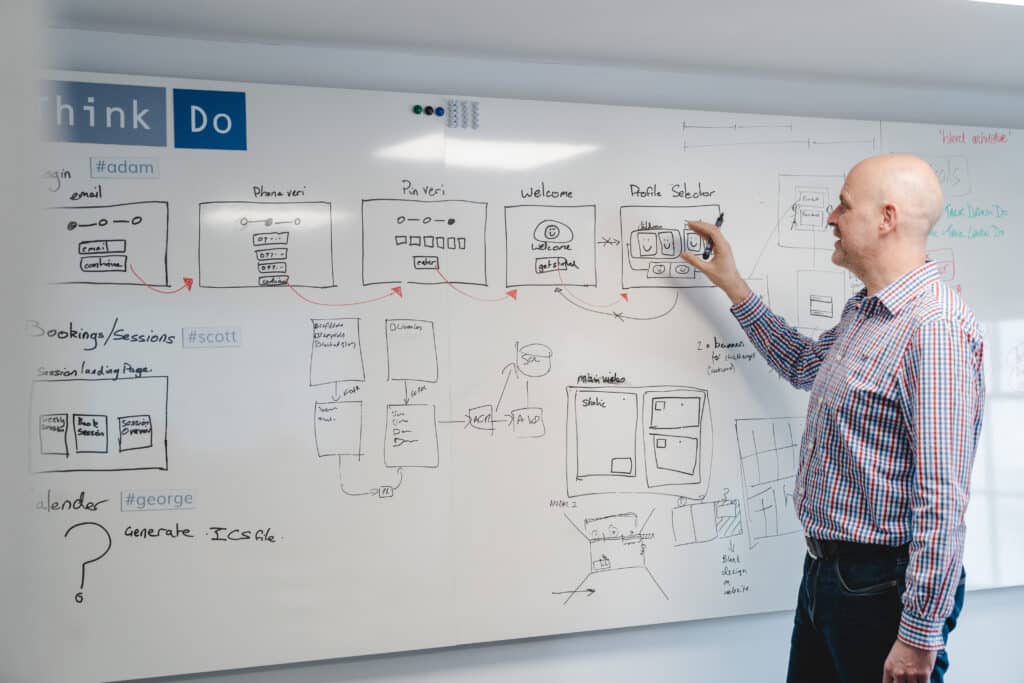Why AI Doesn’t Mean the End of Human-Led Thinking and Delivery

“There will come a point where no job is needed… AI will be able to do everything.”
This statement by Elon Musk reflects a lot of the general attitude towards AI in 2024. Despite the benefits AI poses towards businesses, there’s still a level of scepticism, worry, and even fear.
Are these feelings justified?
In a way, sure. But I, alongside many other industry experts, believe that AI is more likely to change how people lead strategising and delivery — not replace them altogether.
Today I’ll be exploring AI’s key use cases, why human input will remain vital, and potential gaps between both that would need to be addressed.
Suggested reading: Education is expected to be one of the top industries impacted by AI. Read our free eBook, ‘AI Use Cases for Education Publishers’, for more insights on how education is expected to change with AI use.
What tasks can you leave entirely up to AI?
The sectors with the highest potential for AI augmentation and automation include banking, insurance, and software and platforms. I have personally also seen a rapid increase in AI use in education and know from working firsthand with leading education publishers that educational AI operations will only rise dramatically in the coming years.
There are some tasks that AI can undeniably perform well and others that are best left to human judgement. Key use cases include:
1. Content generation
Generative AI can be used to rapidly produce:
- Educational assessment content
- Blogs, articles, and emails
- Boilerplate code
- Internal reports
Using AI for these tasks can be an incredibly effective way to increase productivity, giving your employees more time to focus on complex tasks.
However, continued human oversight over the content production process and output is essential. This means ensuring that the data on which your AI model is trained is not subject to copyright and that the final output is readable and factually correct.
2. Process automation
AI’s ability to intelligently automate backend processes marks a new era in the field of robotic process automation (RPA). Traditional RPA enables businesses to automate their most basic backend processes, such as processing invoices, validating data, and compliance reporting.
Intelligent automation, powered by AI, provides a higher level of nuance that allows businesses to automate increasingly complex tasks. While human supervision over these processes is still required, this can help reduce pressure on employees by limiting the number of repetitive manual tasks they need to perform.
3. Data analysis
According to a UK government report, AI data management and analysis has already been adopted by approximately 9% of UK businesses, making this AI’s most popular use case.
It’s easy to see why. AI is best suited to the analysis of large or unstructured data sets, a task that would otherwise take up significant human time and effort. This allows businesses to:
- Identify security risks or weaknesses
- Compile human-readable reports
- Better understand user behaviour
As artificial intelligence does the heavy lifting of processing large quantities of data, human intelligence can then be applied to derive creative, relevant, and innovative insights.
Pro tip: Read my recent article, ‘Generative AI: Transforming Software & Product Delivery Across Businesses’, for more information on the various uses of AI in the workplace.
What can’t you leave to AI?
How an AI tool is trained, integrated, and finally implemented into a business will define its success. So in a sense, the limits of an AI tool are going to be more of a reflection of its environment rather than of the tool itself.
Data-dependency
The lower the quality of your data, the lower the quality of your AI outcomes. Software that is trained on inaccurate, copyrighted, or conflicting data will be prone to:
- Compliance failures, and potentially even legal challenges
- Biases that are exemplified by AI’s adaptive learning capabilities
- Hallucinations, in which inaccurate data is believed to be accurate
The problems don’t stop there. Off-the-shelf AI tools, including Stability AI and Anthropic, have also come under fire for potential infringements of copyright law.
I generally recommend that businesses work from a trustworthy foundation, such as Microsoft Azure OpenAI, and customise it according to their needs. The process of customisation may require data cleaning, preparation, and architecture development, but this is ultimately the best way to create a tool that will fulfil your business’s long-term requirements while adhering to responsible AI principles.
Case study: Read our custom assessment engine case study to discover how we helped Explore Learning prepare their data for future AI and ML implementation.
‘Fundamental limitations’
The inherent limitations that come with AI demand closer attention. Dr. Matthew Colbrook of Cambridge University shares his view:
‘The issue is with areas where you need a guarantee, because many AI systems are a black box […] It’s completely fine in some situations for an AI to make mistakes, but it needs to be honest about it. And that’s not what we’re seeing for many systems […]’.
His conclusion, in my opinion, is absolutely correct:
‘For AI, it may be a case of changing paths or developing new ones to build systems that can solve problems in a trustworthy and transparent way, while understanding their limitations’.
Businesses and AI experts need to work together to develop AI tools that have a high level of transparency, delivering the time-saving benefits of intelligent automation alongside the security and creativity of human oversight.
Striking the balance between AI and human-led work in your business
Due to the quickly evolving nature of current AI tools, I generally recommend that businesses employ a team of experts or partner with an AI specialist.
Working with an experienced technology provider offers the following key benefits:
- Smoother integration: Create a customised AI tool that integrates seamlessly with your existing technology and day-to-day processes and can be adapted to meet your evolving needs.
- Improved support: Implementing AI may evoke feelings of worry and scepticism among your employees. An experienced provider can help you educate your team about AI’s uses and limitations, empowering human-led decision-making.
- Human and technological collaboration: Establish highly efficient hybrid processes in which AI seamlessly enhances the processing and delivery of human projects.
Whether your final AI tool is entirely custom or built using an OpenAI foundation, it should provide targeted solutions to specific business challenges. This will help to drive efficiency, innovation, and employee satisfaction within your organisation.
Suggested reading: Check out my deep dive into the key challenges and solutions of AI implementation
Achieve sustainable growth with people-first AI software
I’ve spoken to countless business leaders who, feeling pressured by the sudden uptake of AI, have asked me to recommend a brand or product for immediate implementation.
The truth is that success with AI can only be achieved through careful data preparation, strategic integration, and employee education. Even when your AI tool is seamlessly integrated into day-to-day operations, it will require ongoing human management to ensure it continues to serve your developing business needs.
At Talk Think Do, we develop custom generative AI solutions designed to enhance human thinking and creativity for optimised efficiency and growth. Our extensive experience in cloud application development and DevOps implementation has seen us recognised as a leading Microsoft Solutions Partner and Learnosity Services Partner.
If you’re looking to learn more about how AI can fit into your business processes or are ready to start developing your custom solution, book a free consultation with our team today.
Get access to our monthly
roundup of news and insights
You can unsubscribe from these communications at any time. For more information on how to unsubscribe, our privacy practices, and how we are committed to protecting and respecting your privacy, please review our Privacy Policy.
See our Latest Insights
Working as One Team: How Our Business Analysts Bridge Vision and Delivery
When clients partner with us, they often expect engineers and designers. But one of the most powerful roles behind a successful digital product is often less visible: the Business Analyst (BA). At Talk Think Do, BAs aren’t just requirement-gatherers. We’re connectors, between vision and execution, users and features, partners and platforms. In the recent delivery…
Implementing RAG AI Search on On-Premise Files with our AI Search Accelerator
As demand for AI‑powered tools like Microsoft Copilot grows, many organisations are asking the same question: “How can we harness the power of generative AI without moving our sensitive data to the cloud?” In this guide, we’ll explain why Retrieval‑Augmented Generation (RAG) is so effective for on‑premise data and walk through a practical approach using…
Using AI to Strengthen ISO 27001 Compliance
Preparing for our ISO 27001:2022 recertification, and a transition from the 2013 standard, was no small task. As a custom software company handling sensitive client data, we hold ourselves to high standards around security and compliance. But this year, we approached the challenge differently. We built and deployed a custom AI Copilot agent to help…
Legacy systems are costing your business growth.
Get your free guide to adopting cloud software to drive business growth.




